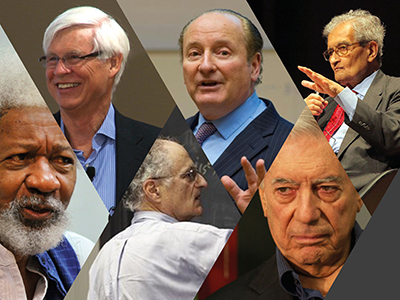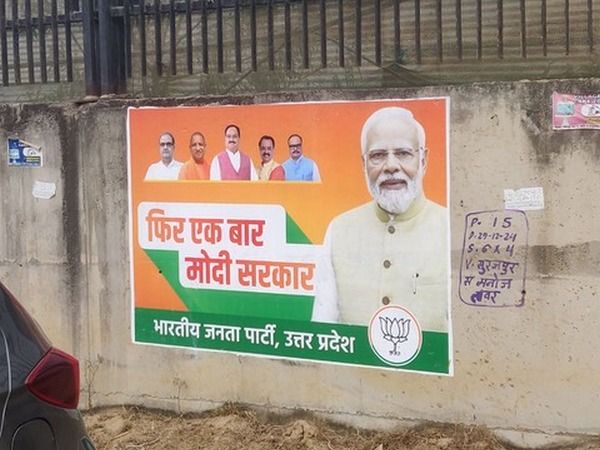The celebration of 150 years since Ca’ Foscari University Venice was founded brings some outstanding guests to take the stage at the Venetian University: six Nobel Prize Winners will give lectures to the University students throughout 2018.
Some of the personalities from around the world that have distinguished themselves in various fields of knowledge for their research, discoveries and inventions, for works of literature and working towards world peace will become part of the Ca’ Foscari community themselves. They will be lecturers for the degree programmes of the disciplines they have been awarded for and that define our University: economics and literature. A surplus value that Ca’ Foscari wants to give to its teaching, a one of a kind education that is unique to students, the heart and soul of Ca’ Foscari.
The Nobel lectures include:
Wole Soyinka, Nobel Prize Winner for Literature in 1986 - taking the stage in April
Robert Merton, Nobel Prize Winner for Economics in 1997 - taking the stage in September
Amartya Sen, Nobel Prize Winner for Economics in 1998 - taking the stage in May
Robert Engle, Nobel Prize Winner for Economics in 2003 - taking the stage in May
Mario Vargas Llosa, Nobel Prize Winner for Literature in 2010 - taking the stage in June
Thomas Sargent, Nobel Prize Winner for Economics in 2011 - taking the stage in Autumn
Wole Soyinka (Abeokuta, 13/07/1934), playwright, poet, Nigerian writer and essayist, he is considered to be one of the most important exponents of sub-saharan Africa, as well as the biggest African playwright. He has received various appraisals around the world including the Nobel Prize for literature in 1986.
Amartya Kumar Sen (Santiniketan, 03/11/1933) economist, philosopher and Indian academic, Nobel Prize Winner for Economics in 1998 for using new economic categories, able to overcome the limits of traditional economic analysis, outlining a new concept development that differs from growth. Economic development no longer coincides with an increase in income but with an increase in quality of life. It is precisely his focus on quality, rather than quantity, that characterises the studies of this economist.
Jorge Mario Pedro Vargas Llosa (Arequipa, 28/03/1936) writer, playwright and Peruvian politician, naturalised Spanish citizen, author of important works of Latin-American literature, and considered one of the major writers Spanish language writers of the twentieth century, and in 2010, was honoured with the Nobel Prize for literature.
Robert Cox Merton (New York, 31/07/1944), American economist, and winner of the Nobel Peace Prize for economics together with Myron Scholes in 1997, for the development of ‘new methodology to value derivatives’. Financial researcher, he was one of three researchers that developed mathematics in the ‘70s.
Robert Franklin Engle (Syracuse, 10/11/1942), economist and American statistician, Nobel Prize winner for Economics in 2003 together with Sir Clive Granger, for the development of methods analysing economic time series with time-varying volatility (ARCH), developing a method to analyse unpredictable movements in financial market values and their interest rates. An accurate characterisation and prediction of these movements is essential to quantify and effectively manage the risk.
Thomas John Sargent (Pasadena 19/07/1943), economist and American statistician, Nobel Prize winner for Economics in 2011 alongside Christopher A. Sims ‘for their empirical research on cause and effect in the macroeconomy’. Specialising in macroeconomics, monetary economics and in time series econometrics, he is one of the leaders of the rational expectations revolution, according to which the agents modeled by economists are able to perform forecasts on future events with the capacity at least equivalent to that of the economist from which the model is formulated. Previously, the researcher could assume a constant volatility, or use simplified assumptions to approach it. Engle developed a series of statistical models of volatility that capture the tendency of financial asset prices to fluctuate between periods of high volatility and periods of low volatility. These models are called Autoregressive Conditional Heteroskedasticity, or ARCH, and have become essential tools of modern theory and practise of asset pricing.
The initiative is in collaboration with TheBauers and Fondazione di Venezia.
For further information and to follow the details of the other initiatives for 150 years of Ca’ Foscari: http://www.unive.it/150 (in Italian).











